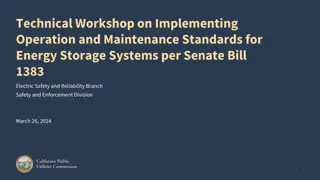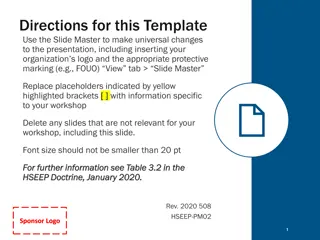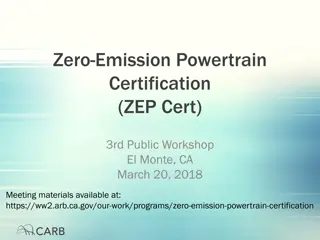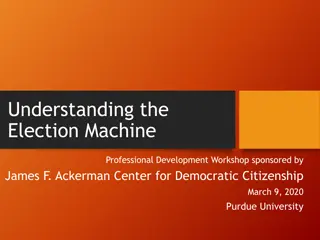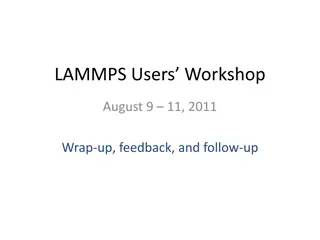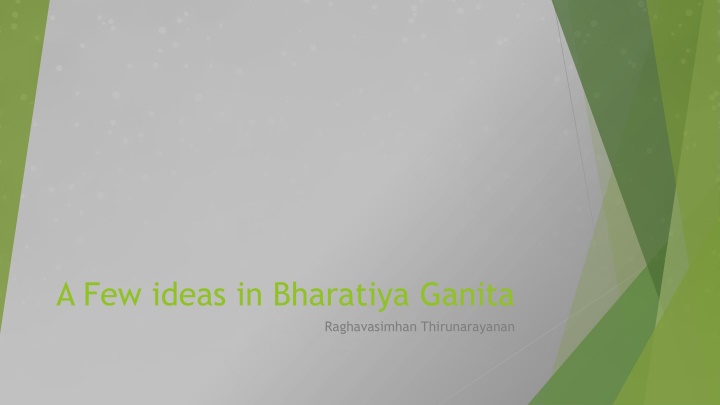
Mathematical Concepts in Bharatiya Ganita and Narayana Sequence
Explore the intriguing world of Bharatiya Ganita with concepts like Bhaskara's exercises and Brahmagupta's problems. Delve into the mathematical sequence of Narayana Pandita, understanding progeny generations and Pythagorean triangles. Unravel the techniques for generating combinations of numbers in the Prastr problem, all to enhance your mathematical knowledge.
Download Presentation

Please find below an Image/Link to download the presentation.
The content on the website is provided AS IS for your information and personal use only. It may not be sold, licensed, or shared on other websites without obtaining consent from the author. If you encounter any issues during the download, it is possible that the publisher has removed the file from their server.
You are allowed to download the files provided on this website for personal or commercial use, subject to the condition that they are used lawfully. All files are the property of their respective owners.
The content on the website is provided AS IS for your information and personal use only. It may not be sold, licensed, or shared on other websites without obtaining consent from the author.
E N D
Presentation Transcript
A Few ideas in Bharatiya Ganita Raghavasimhan Thirunarayanan
Exercise Bhaskara: What are the sine values of 18 , 33 & 61 ?
Two ascetics problem of Brahmagupta z? + ? = ? + ? e h y 4
Two ascetics problem 8 52 z e 12 h y 48 C=4 ? = ? ? = + ? ? + ? = + ? ? ? = ?+2 Raghavasimhan Thirunarayanan 5
Exercise Construct Integer Pythagorean Triangles where height of the hill is 5? (Choose any c ).
Narayana sequence Narayana Pandita (c.a. 1325-1400) in his Ganitakaumudi A cow gives birth to a (she) calf every year and their calves themselves begin giving birth, when 3 years old. O learned, tell me the number of progeny produced by a cow during 20 years? Raghavasimhan Thirunarayanan 8
Narayana sequence Year1 Year2 Year3 Year4 Year5 Year6 Year7 Year8 Year9 Gen1 Gen2 Gen3
Narayana sequence Generation 1: 1+1+1+1+1+1+1+1+1+1+ 1+ . = 20 Generation 2: 0+0+0+1+2+3+4+5+6+7+ 8+ = 153 Generation 3: 0+0+0+0+0+0+1+3+6+10+15+ = 560 Generation 4: 0+0+0+0+0+0+0+0+0+1+ 4+10+ =1001 1, 1, 1, 2, 3, 4, 6, 9, 13, 19, 28,. . Generation 5: 792 Generation 6: 210 Generation 7: 8 Total = 2744+1=2745. Narayana s sequence: ??= ?? 1+ ?? 3. 11 Raghavasimhan Thirunarayanan
Combinations Prastr Problem: Given a set of numbers 1,2,3, ..,n how do we generate all possible combination of r numbers? For example: Given numbers 1,2, , 8, what are the combinations of 3 numbers that can be generated? We know the total possibilities is ???, but how to construct those combinations?
Combinations Prastr 1 2 3 4 5 6 7 8 10 11 12 21 22 678 578 478 378 278 178 568 468 268 168 458 128 567 Prast r List out all possible combinations. Narayana Pandita GanitaKaumudi (c.1356)
Combinations Ladduka Chalan 1 O O O 2 O O 3 O 4 5 6 7 8 Start with all Laddukas on the left. 1 2 3 4 5 6 At each stage, starting from the left move the first ladduka that can be moved one step to the right. O O O O O O O Leave the laddukas on the right as such. O O O O O If there are laddukas to the left move them to the extreme left. 7 8 9 10 11 56 O O O O O O O O O O Repeat the process till all laddukas are moved sequentially at the extreme right. O O O O O O O O
Exercise Write the first 15 combinations of 8?6?
Permutations: SrngadevsTna prast r 7 svaras S,R,G,M,P,D,N. For example, let us consider a set of 4 svaras S,R,G,M. 1 S R G M We know the total permutations is ?!, but how to construct those permutations? Successive rows: In each row of the prast r , starting from the left, identify the first svara which has at least one lower svara to the left.
SrngadevsTna prastr In each row of the prast r , starting from the left, identify the first svara which has at least one lower svara to the left. 1 2 3 S R S R S G G G R M M M Below that svara, place the highest of these lower svaras. Bring down all the svaras which are to the right, as they are, to the next row. To the left, place all the remaining svaras in the ascending order. S rngadeva - Sangitaratn kara (c.1225)
SrngadevsTna prastr 1 S 1 R 2 S 1 G 3 R 2 G 3 R 2 S 1 G 3 S 1 G 3 R 2 G 3 G 3 R 2 R 2 S 1 S 1 M 4 M 4 M 4 M 4 M 4 M 4 7 S 1 R 2 S 1 M 4 R 2 M 4 R 2 S 1 M 4 S 1 M 4 R 2 M 4 M 4 R 2 R 2 S 1 S 1 G 3 G 3 G 3 G 3 G 3 G 3 13 S 1 G 3 S 1 M 4 G 3 M 4 G 3 S 1 M 4 S 1 M 4 G 3 M 4 M 4 G 3 G 3 S 1 S 1 R 2 R 2 R 2 R 2 R 2 R 2 19 R 2 G 3 R 2 M 4 G 3 M 4 G 3 R 2 M 4 R 2 M 4 G 3 M 4 M 4 G 3 G 3 R 2 R 2 S 1 S 1 S 1 S 1 S 1 S 1 2 8 14 20 3 9 15 21 4 10 16 22 5 11 17 23 6 12 18 24
Exercise Write the first 15 permutations of a 5 svara prast r ?
Operations with Zero ? + 0 = ?; 02= 0; ? pending. ? 0 ? + 0 0 = ?. 0 = + ; ? 0 = 0; But retain if operations are 0= ?.
Factorisation in Indian mathematics Factorise 1161 342+ 5 2 34 + 1 5 =82 1161 = 352 82= 43 27 = 43 3 3 3. In other words 1161 = (34 + 8 + 1)(34 8 + 1)
Factorisation in Indian mathematics Factorise 1001 312+ 40. First 2 31 + 1 40 = 23 is not a perfect square. So, we add to c, 65, 67, till it becomes a perfect square (65+67+ +89+23)=322 (14 numbers have been added to make a perfect square; so ? = 14) ? = 14,? = 32 1001 = 31 + 14 + 32 31 + 14 32 = 77 13 = 7 11 13 Rediscovered by Fermat in 1642.











